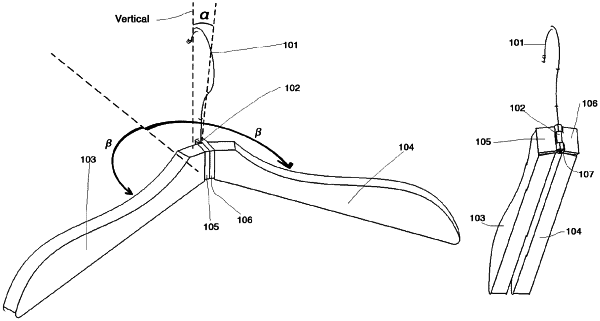| CPC A47G 25/40 (2013.01) [A47G 25/4023 (2013.01); E06B 9/0638 (2013.01); E06B 9/0653 (2013.01); E06B 9/36 (2013.01); E06B 9/362 (2013.01); F16K 1/2007 (2013.01); F16K 1/2021 (2013.01); F16K 47/012 (2021.08)] | 20 Claims |

|
1. A folding hanger, comprising:
a hinge pin having upper and lower ends;
a hook operably coupled to the hinge pin upper end for suspending the hinge pin;
a first hanger arm having proximal and distal ends and defining a support surface therebetween, the first hanger arm proximal end defining a first stop;
a first knuckle extending from the first hanger arm proximal end, the first knuckle having a first hole;
a second hanger arm having proximal and distal ends and defining a support surface therebetween, the second hanger arm proximal end defining a second stop; and
a second knuckle extending from the second hanger arm proximal end, the second knuckle having a second hole;
wherein the hinge pin passes through the first hole and the second hole along a hinge axis and couples the first and second hanger arms to the hook such that the first and second hanger arms are movable relative to one another between an extended configuration and a folded configuration, the first stop abutting the second stop when the first and second hanger arms are at the extended configuration, the first stop being separated from the second stop when the first and second hanger arms are at the folded configuration;
wherein the folding hanger has a center of gravity when the first and second hanger arms are at the extended configuration and suspended by the hook such that: the hinge axis is angled relative to vertical in a first direction and the first and second stops are biased to abut one another;
wherein the folding hanger has a center of gravity when the first and second hanger arms are at the folded configuration and suspended by the hook such that: the hinge axis is angled relative to vertical in a second direction and the first and second stops are biased to be separated from one another; and
wherein from a stationary frame of reference either:
(a) the first direction is positive to vertical and the second direction is negative to vertical; or
(b) the first direction is negative to vertical and the second direction is positive to vertical.
|